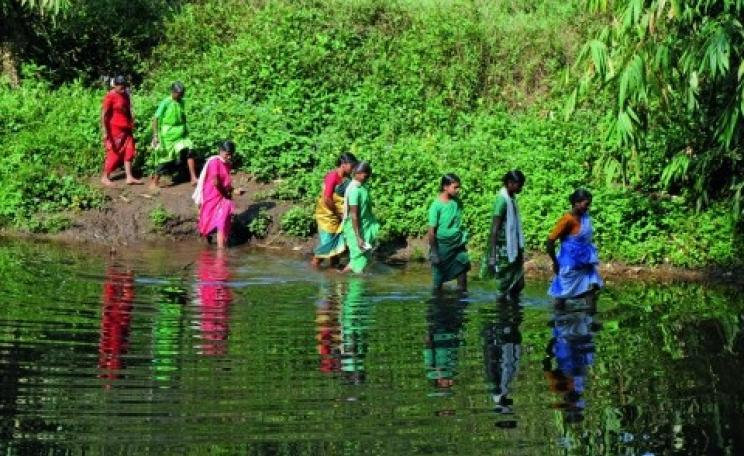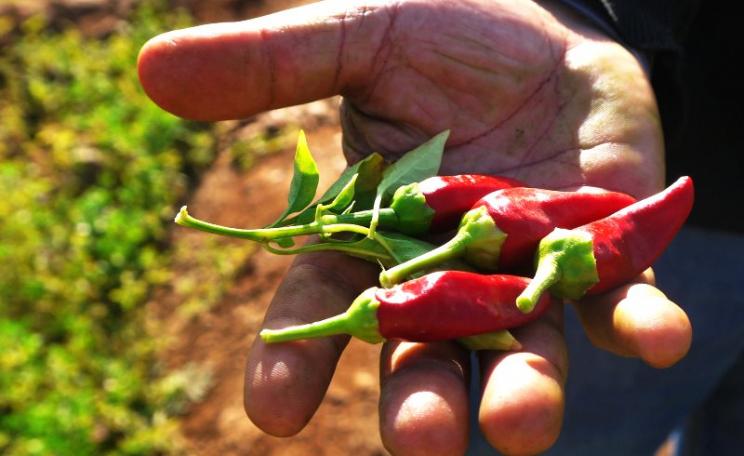With around a third of food produced for human consumption either lost or wasted, and the urgent need to find less carbon-intensive ways of feeding the burgeoning global population, solar heat can play a key role in helping us all live more sustainably.
Globally, solar technologies supply a lot more energy in the form of heat (mainly hot water) than in the form of electricity. But somehow, solar heating never makes the headlines.
Perhaps the early DIY associations of solar water-heaters - like re-used central heating parts - can't match the exciting infancy of solar electricity in space exploration.
In the world of international development, solar heating also has a low profile compared to other forms of clean energy. Hot showers are, probably rightly, viewed as a luxury rather than a basic need.
In comparison, given there's 1.5 billion people who've never had the opportunity of electric light in their homes, it's not surprising that off-grid solar electricity gets most of the attention.
But solar heat can bring major benefits aside from simply providing hot water. One sector where it has potential is in food production, where it can help reduce food wastage, help businesses save money and boost the rural economy - not to mention reduce carbon emissions.
Two of this year's Ashden Awards finalists, and one winner from 2008, have taken a business-like look at applications for solar heat in food production, and are showing just what it can do:
Helping farmers keep things dairy clean
Enertiva, a solar business in Costa Rica, won't recommend a solar solution to a customer without demonstrating that it will give a return on investment, through energy savings, of less than seven years.
Sometimes innovative thinking on finance and technology is needed to achieve that return, but in the case of the dairy sector it was a no-brainer. On-farm dairies - and Costa Rica has thousands of them - need hot water to wash their milking equipment, otherwise the milk can be spoiled and go to waste.
Milking happens every day - cows don't take holidays - so equipment needs a hot wash every day. Fortunately, in Costa Rica the sun also shines (nearly) every day!
With such a good match between hot water demand and solar supply, Enertiva worked out that the installed cost of a solar water-heater could be paid back within a year from the savings in electricity or gas for heating water in a dairy. Thanks to loans from Dos Pinos, the national dairy cooperative, farmers aren't put off by the up-front cost of the solar water-heater, so business is growing.
Saving electricity and gas means cutting carbon emissions as well as putting more money into Costa Rica's rural economy. There's great potential for such systems elsewhere in Central America, like Panama, and in other countries with year-round sunshine.
Drying fresh produce, from gooseberries to oyster mushrooms
Uganda business Fruits of the Nile, a 2008 winner of an Ashden Award, also uses solar heat to make good quality products and reduce wastage, but does so through drying rather than hot water.
Southern Uganda has a great climate for growing fruit, and for many smallholder farmers it is the main cash crop. But a lot of fresh fruit goes to waste because of the long distances from the farms to market, and prices of collapse when there's a glut.
With around a third of food produced for human consumption either lost or wasted, and the urgent need to find less carbon-intensive ways of feeding the burgeoning global population, solar heat can play a key role in helping us all live more sustainably.
Open drying in the sun is a technique that has been used for millennia to preserve produce, but leaves it at the mercy of vermin, dust and rain. Simple solar driers protect from all these nuisances, and also provide a controlled flow of warm air through the produce as it dries, which leads to a better-quality finished result.
The solar drier also greatly reduces the levels of ultra violet light hitting the fruit while it dries. The UV blackens the fruit , reducing its value, so the solar driers impriove the return to farmers and processors.
Fruits of the Nile has built up a network of farmers who use these solar driers to dry bananas, pineapple, cape gooseberries, oyster mushrooms and other fruits on their farms, right where it is grown. Through the high quality standards demanded both for on-farm drying and at its fruit packing factory, Fruits of the Nile is able to export most of its dried fruit.
Much of the dried fruit achieves both organic and Fairtrade certification - no mean feat when dealing with over a hundred small fruit-drying businesses, many of them 300 km or more from the factory.
SunBest - reducing waste in food processing
Indian business SunBest sells small solar driers which are used for a wide range of products - from herbs to fruit to fish. Importantly, SunBest has also shown that solar drying is just as relevant at a large scale as on individual farms. And 'large' means typically 200 m2 - the size of a tennis court. In food-processing plants, solar air-heaters save on the use of coal and wood for drying a wide range of produce like lentils, spices, herbs and tea.
Usually the solar air-heater is designed so that it provides all the heat needed for drying on sunny days, with fuel-based heating used to supplement the solar at other times, rather than relying completely on solar. This means that there's no need to provide heat storage with the solar air-heater, which could significantly increase the cost.
Used in tandem with fuel-based heating, the economics of solar are very positive. Typically the cost of a solar air-heater can be paid back within three years from savings on fuel. Not only do solar air-heaters cut costs and therefore increase profits, they also reduce CO2 emissions.
With around a third of food produced for human consumption either lost or wasted, and the urgent need to find less carbon-intensive ways of feeding the burgeoning global population, solar heat can play a key role in helping us all live more sustainably.
What's more, when it's used at the point of food production, the money saved stays in the local economy.
Ashden Awards: From 8-12 June 2015, sustainable trailblazers from four continents will be congregating in London for 2015 Ashden Awards week, the highlight of the green energy calendar.
Event: Ashden's International Conference, the Business of Energy, is on 9th June at King's Place in London, featuring 2015 Ashden Awards finalists SunBest and Enertiva and sustainable energy leaders from across the globe. Find out more and book here.
Dr Anne Wheldon is an expert on sustainable energy technologies and on how these can be used to help mitigate climate change and increase resilience to its impacts. She is particularly knowledgeable about energy access in developing countries, including solar electricity and clean cookstoves. She is currently serving as Knowledge and Research Adviser to Ashden, a charity promoting sustainable energy and all the life-changing benefits it brings.




